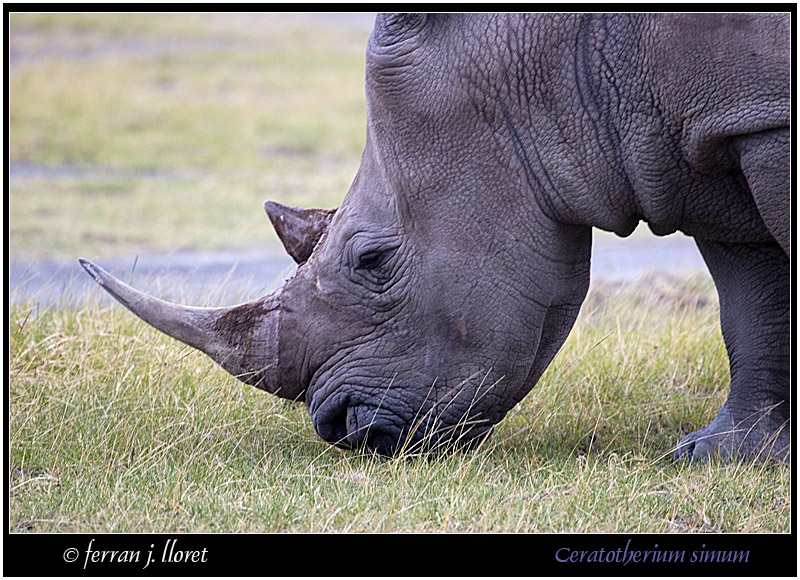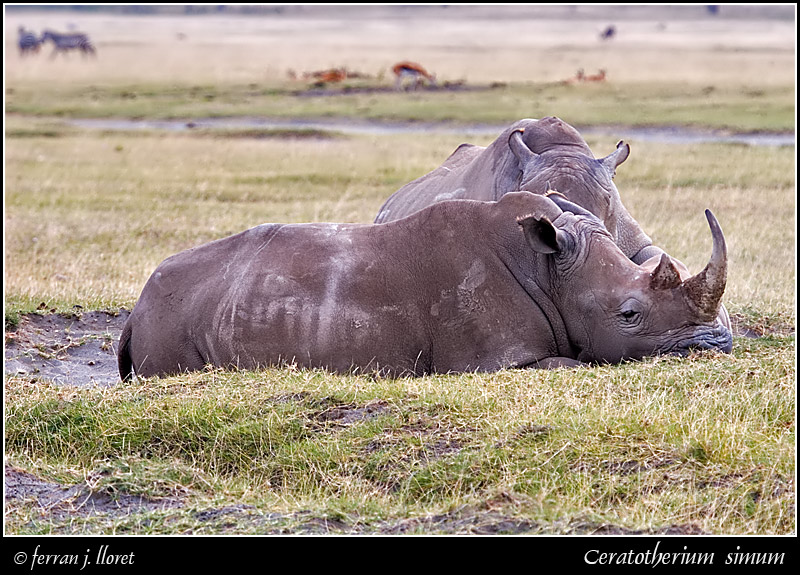White rhino
The picture shows a white rhino’s head and the two horns on its snout, while it was grazing in Nakuru. Despite its name, its skin is not white; the skin is dark grey, not very different from black rhinos. The wide mouth, adapted to cropping large swaths of grass, is one of the differences between black rhinos and white rhinos that are also called square-lipped rhinoceros. White rhino, the largest land animal behind the elephant, is now a near threatened specie.
|
The picture shows a white rhino’s head and the two horns on its snout, while it was grazing in Nakuru. Despite its name, its skin is not white; the skin is dark grey, not very different from black rhinos. The wide mouth, adapted to cropping large swaths of grass, is one of the differences between black rhinos and white rhinos that are also called square-lipped rhinoceros. White rhino, the largest land animal behind the elephant, is now a near threatened specie.
The White Rhinoceros or Square-lipped rhinoceros (Ceratotherium simum) is one of the five species of rhinoceros that still exists and is one of the few megafauna species left. Behind the elephant, this is probably the most massive remaining land animal in the world, along with the Indian Rhinoceros which is around the same size as the White Rhinoceros. It is well known for its wide mouth used for grazing and being the most social of all rhino species. The White Rhino is the most common of all rhinos although their subspecies population are very different from one another, (The northern subspecies is the rarest rhino taxa while the southern subspecies is the most common rhino taxa).
There are two subspecies of White Rhinos; as of 2005, South Africa has the most of the first subspecies, The Southern White Rhino (Ceratotherium simum simum). Their population is about 11,000, making them the most abundant subspecies of rhino in the world. Wild-caught southern whites will readily breed in captivity given appropriate amounts of space and food, as well as the presence of other female rhinos of breeding age. For instance, 91 calves have been born at the San Diego Wild Animal Park since 1972. However, for reasons that are not currently understood, the rate of reproduction is extremely low among captive-born southern white females.
There are also two White Rhinos in Livingstone, Zambia (in the Mosi-o-tunia zoological park).
Information source
IUCN Red List
More picture
Photographed in dry grassland of the Nakuru Lake National Reserve
|

